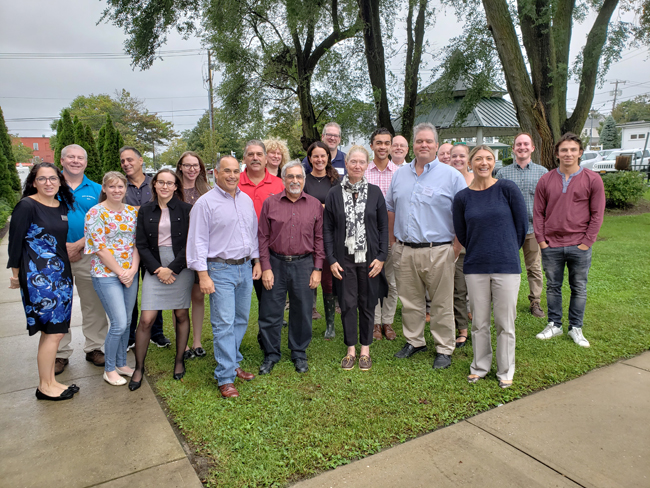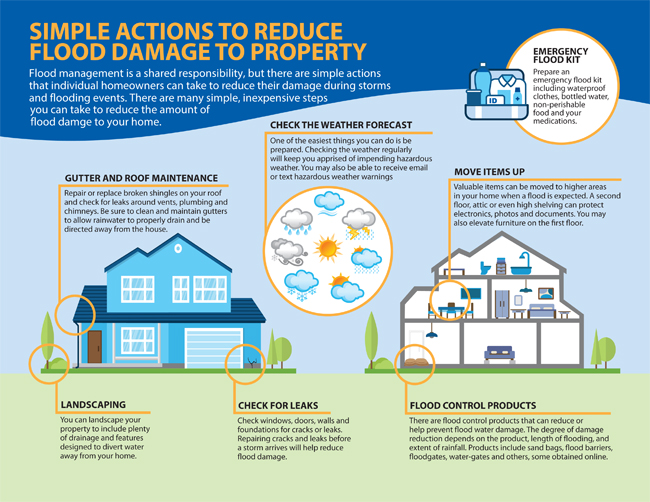
Land Use Leadership Alliance, Resiliency Training Program, Spring 2018 Class
—Chris Gonzales, Freelance Science Writer, New York Sea Grant
White Plains, NY, September 8, 2020 - Despite more frequent severe weather, property owners continue to build in areas with high risk for flooding and storm damage. Many local communities have been slow in responding to the risks their residents face in regard to climate change. Now experts are studying what needs to happen and helping local leaders progressively initiate changes to zoning, planning, and development rules.
Of course, it requires the support of the community to change land use policies in order to reduce the risks.
Through a project funded by New York Sea Grant (NYSG), 10 communities received detailed assessments of their local resiliency policies. In addition, one community received hands-on guidance in making amendments.
And the people win
Land use authority determines how and where buildings are placed as well as how natural resources are conserved or preserved. Project leaders want to reverse a trend of property owners building and rebuilding without knowledge of the increased risk for extreme weather events.
The project leaders created a decision-support tool to help leaders amend existing land use plans, with the ultimate goal of facilitating preparedness and resiliency. They also provided detailed strategies to help community leaders tackle the complexities.
“Decision-support tools help local governments by providing a framework for assessing a community’s existing codes, plans, and policies,” said project leader Jessica Bacher, executive director of the Land Use Law Center at Pace University School of Law. “Furthermore, by choosing appropriate strategies to amend them, they can improve the community’s local coastal resiliency and storm preparedness.”
The way forward
Together with project leader and professor John Nolon, also of Pace University’s Land Use Law Center, they brought training to 42 community leaders on Long Island. They also provided technical assistance through assessment of zoning codes in connection with coastal resiliency.
Examples of zoning law changes:
(1) require dry land access to facilities, particularly to aid emergency personnel
(2) adopt a program to buy out properties that frequently flood
(3) adopt a post-disaster redevelopment ordinance, to prepare the community for recovery and rebuilding efforts
Model community
The project leaders zeroed in on the Town of Brookhaven, Long Island, as a test case study and model community.
Project leaders coordinated with local government, state, and federal officials, including the New York Department of State, New York Department of Environmental Conservation, Federal Emergency Management Agency (FEMA), and the Environmental Protection Agency (EPA), and relayed technical findings and guidance to local leaders.
Bacher and lead trainer Tiffany Zezula, deputy director of the Land Use Law Center, worked demographic information into strategy development and workshop and meeting materials.
The project leaders noted that this study contributed to the education of local board members, planners, lawyers, and policymakers.
Ultimately, one of the biggest gains for this project was developing and informing decision-support tools and setting a strategy for future resiliency.
Just as this project was starting, FEMA and the EPA launched the approximately 70-page assessment tool (pdf).
“This project served as a pilot for using that assessment tool,” said Bacher.

Being resilient before a coastal storm is key, which is why NYSG's Marine Coastal Processes and Hazards Specialist Kathleen Fallon has produced, in a separate effort, a fact sheet series that can be found at www.nyseagrant.org/coastalresiliency.
More Info: New York Sea Grant
New York Sea Grant (NYSG), a cooperative program of Cornell University
and the State University of New York (SUNY), is one of 34 university-based
programs under the National Oceanic and Atmospheric Administration’s
National Sea Grant College Program.
Since 1971, NYSG has represented a statewide network of integrated
research, education and extension services promoting coastal community
economic vitality, environmental sustainability and citizen awareness
and understanding about the State’s marine and Great Lakes resources.
Through NYSG’s efforts, the combined talents of university scientists
and extension specialists help develop and transfer science-based
information to many coastal user groups—businesses and industries,
federal, state and local government decision-makers and agency managers,
educators, the media and the interested public.
The program maintains Great Lakes offices at Cornell University, University at Buffalo, SUNY Oswego and the Wayne County Cooperative Extension office
in Newark. In the State's marine waters, NYSG has offices at Stony Brook
University in Long Island, Brooklyn College and Cornell Cooperative
Extension in NYC and Kingston in the Hudson Valley.
For updates on Sea Grant activities: www.nyseagrant.org has RSS, Facebook, Twitter, Instagram, and YouTube links. NYSG offers a free e-list sign up via www.nyseagrant.org/nycoastlines for its flagship publication, NY Coastlines/Currents, which is published quarterly. Our program also produces an occasional e-newsletter,"NOAA Sea Grant's Social Media Review," via its blog, www.nyseagrant.org/blog.